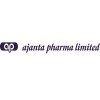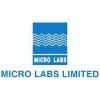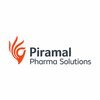
i
Granules India
Filter interviews by
Granules India Technology Transfer Executive Interview Questions and Answers
Granules India Technology Transfer Executive Interview Experiences
1 interview found
I applied via Naukri.com and was interviewed in Aug 2021. There were 3 interview rounds.

(2 Questions)
- Q1. 1. Overal profile questions related to tech service 2. Scaleup , scale down, 3. Risk asssessments & Mitigation.
- Q2. Above given are topics study and learn.
(8 Questions)
- Q1. What are your salary expectations?
- Q2. What is your family background?
- Q3. Why should we hire you?
- Q4. Why are you looking for a change?
- Q5. Tell me about yourself.
- Q6. What are your strengths and weaknesses?
- Q7. Where do you see yourself in 5 years?
- Q8. Share details of your previous job.
Interview Preparation Tips
Top trending discussions






Interview questions from similar companies

I appeared for an interview in May 2017.
Interview Preparation Tips
Experience: Query in detail as mentioned in my resume
Tips: please mention thing as you know very well
Round: HR Interview
Experience: asking for previous company any why I am intended to shift to new one
Tips: give proper reason or simply growth
Skills: Accounting

Assistant Manager Interview Questions & Answers
Micro Labsposted on 19 Dec 2019
I applied via Referral and was interviewed before Dec 2018. There were 3 interview rounds.
Interview Questionnaire
3 Questions
- Q1. How many types of ICH guidance s
- Q2. What is the Ich limit for methanol and class of solvent
- Ans.
The Ich limit for methanol is 0.6% and it is classified as a class 3 solvent.
The Ich limit for methanol refers to the maximum allowable amount of methanol in a pharmaceutical product.
The Ich limit for methanol is set at 0.6%, meaning that the concentration of methanol should not exceed 0.6% in the product.
Methanol is classified as a class 3 solvent according to the International Council for Harmonisation of Technical R...
- Q3. What is the specification limit for known impurities and unknown impurities and which guideline explains
- Ans.
The specification limit for known and unknown impurities varies depending on the specific substance being tested.
The specification limit for known impurities is typically set by regulatory agencies or pharmacopoeias.
For example, the United States Pharmacopeia (USP) sets limits for known impurities in pharmaceutical substances.
The specification limit for unknown impurities is usually determined through method validation...
Interview Preparation Tips

I applied via Approached by Company and was interviewed before Jun 2021. There were 2 interview rounds.

(1 Question)
- Q1. Technical and Managerial skill
Interview Preparation Tips
Process skills

I appeared for an interview in Nov 2020.
Interview Questionnaire
1 Question
- Q1. 1. Complete P2P Cycle
- Ans.
P2P cycle refers to the process of procuring goods or services from a supplier and making payments for them.
The cycle starts with identifying the need for goods or services.
The next step is to create a purchase order (PO) and send it to the supplier.
The supplier then delivers the goods or services and sends an invoice to the buyer.
The buyer verifies the invoice and matches it with the PO and goods received.
If everythin...
Interview Preparation Tips
Skills evaluated in this interview

I applied via Referral and was interviewed in Feb 2024. There were 2 interview rounds.
(2 Questions)
- Q1. Personal Profile
- Q2. Why change required
- Ans.
Change is required to adapt to evolving market trends, improve efficiency, and stay competitive.
Adapt to evolving market trends to meet customer demands
Improve efficiency by implementing new technologies or processes
Stay competitive by staying ahead of competitors and offering innovative solutions
(3 Questions)
- Q1. Self introduction
- Q2. Process related
- Q3. Sops and changes
Interview Preparation Tips

I applied via Naukri.com and was interviewed in Jun 2024. There were 2 interview rounds.
(3 Questions)
- Q1. What is your current role, and what improvements have you implemented in your current processes? Please provide an example.
- Ans.
I am currently a Team Lead in a customer service department, where I implemented a new training program to improve employee performance.
Implemented a new training program focused on improving communication skills and conflict resolution techniques
Introduced regular feedback sessions to provide employees with constructive criticism and recognition for their achievements
Utilized performance data to identify areas of impr...
- Q2. What are your strength and weaknesses. How do you overcome with your weaknesses.
- Ans.
My strengths include strong leadership skills and attention to detail. My weakness is sometimes being too critical of myself, but I overcome this by practicing self-compassion and seeking feedback.
Strengths: strong leadership skills
Strengths: attention to detail
Weakness: being too critical of myself
Overcoming weakness: practicing self-compassion
Overcoming weakness: seeking feedback
- Q3. Which techniques will you implement for virus inactivation?
(2 Questions)
- Q1. Current role and package.
- Ans.
Currently working as a Sales Supervisor with a competitive salary package.
Sales Supervisor role
Competitive salary package
Responsibilities include managing sales team, setting targets, and analyzing performance
- Q2. What's your expectations.
- Ans.
I expect clear communication, support from upper management, opportunities for growth, and a positive work environment.
Clear communication with team members and upper management
Support from upper management in decision-making and problem-solving
Opportunities for growth and advancement within the company
A positive work environment that fosters teamwork and collaboration

(1 Question)
- Q1. Which type of level sensor used in ferment
- Ans.
The type of level sensor commonly used in fermenters is a capacitance level sensor.
Capacitance level sensor is commonly used in fermenters to measure the level of liquid or solid materials.
This type of sensor works by detecting changes in capacitance as the level of the material changes.
Capacitance level sensors are accurate, reliable, and suitable for various types of fermenters.
Other types of level sensors used in fe...

I applied via Approached by Company and was interviewed in Jul 2023. There were 2 interview rounds.
(1 Question)
- Q1. Deep questions on process and quality elements
(1 Question)
- Q1. All Job related questions

I applied via LinkedIn and was interviewed in Aug 2023. There was 1 interview round.
(2 Questions)
- Q1. Lyophilization technique
- Ans.
Lyophilization is a technique used to remove water from a product by freeze-drying it.
Lyophilization involves freezing the product and then subjecting it to a vacuum to remove the frozen water through sublimation.
This technique is commonly used in the pharmaceutical industry to preserve drugs and vaccines.
Lyophilization helps to extend the shelf life of products and maintain their stability.
It is also used in the food ...
- Q2. Trouble shooting during cycle development
- Ans.
Trouble shooting during cycle development
Identify the problem or issue
Analyze the root cause
Develop a plan to resolve the problem
Implement the plan
Monitor and evaluate the results
Make necessary adjustments if needed
Granules India Interview FAQs
Tell us how to improve this page.
Granules India Interviews By Designations
- Granules India Executive Interview Questions
- Granules India Senior Executive Interview Questions
- Granules India Assistant Manager Interview Questions
- Granules India Associate Officer Interview Questions
- Granules India Technical Associate Interview Questions
- Granules India Process Engineer Interview Questions
- Granules India QC Executive Interview Questions
- Granules India Officer Interview Questions
- Show more
Interview Questions for Popular Designations
- Transfer Pricing Analyst Interview Questions
- Business Transformation Consultant Interview Questions
- Transformation Manager Interview Questions
- Digital Transformation Consultant Interview Questions
- Technology Analyst Interview Questions
- Information Technology Support Engineer Interview Questions
- Technology Consultant Interview Questions
- Information Technology Recruiter Interview Questions
- Show more
Interview Questions from Similar Companies
|
Executive
1k
salaries
| ₹2.1 L/yr - ₹7 L/yr |
|
Senior Executive
660
salaries
| ₹3 L/yr - ₹10 L/yr |
|
Officer
423
salaries
| ₹2 L/yr - ₹6.1 L/yr |
|
Assistant Manager
343
salaries
| ₹5.5 L/yr - ₹12.5 L/yr |
|
Deputy Manager
185
salaries
| ₹7.5 L/yr - ₹17 L/yr |

Hetero

Abbott

Micro Labs

Ajanta Pharma
- Home >
- Interviews >
- Granules India Interview Questions >
- Granules India Technology Transfer Executive Interview Questions











